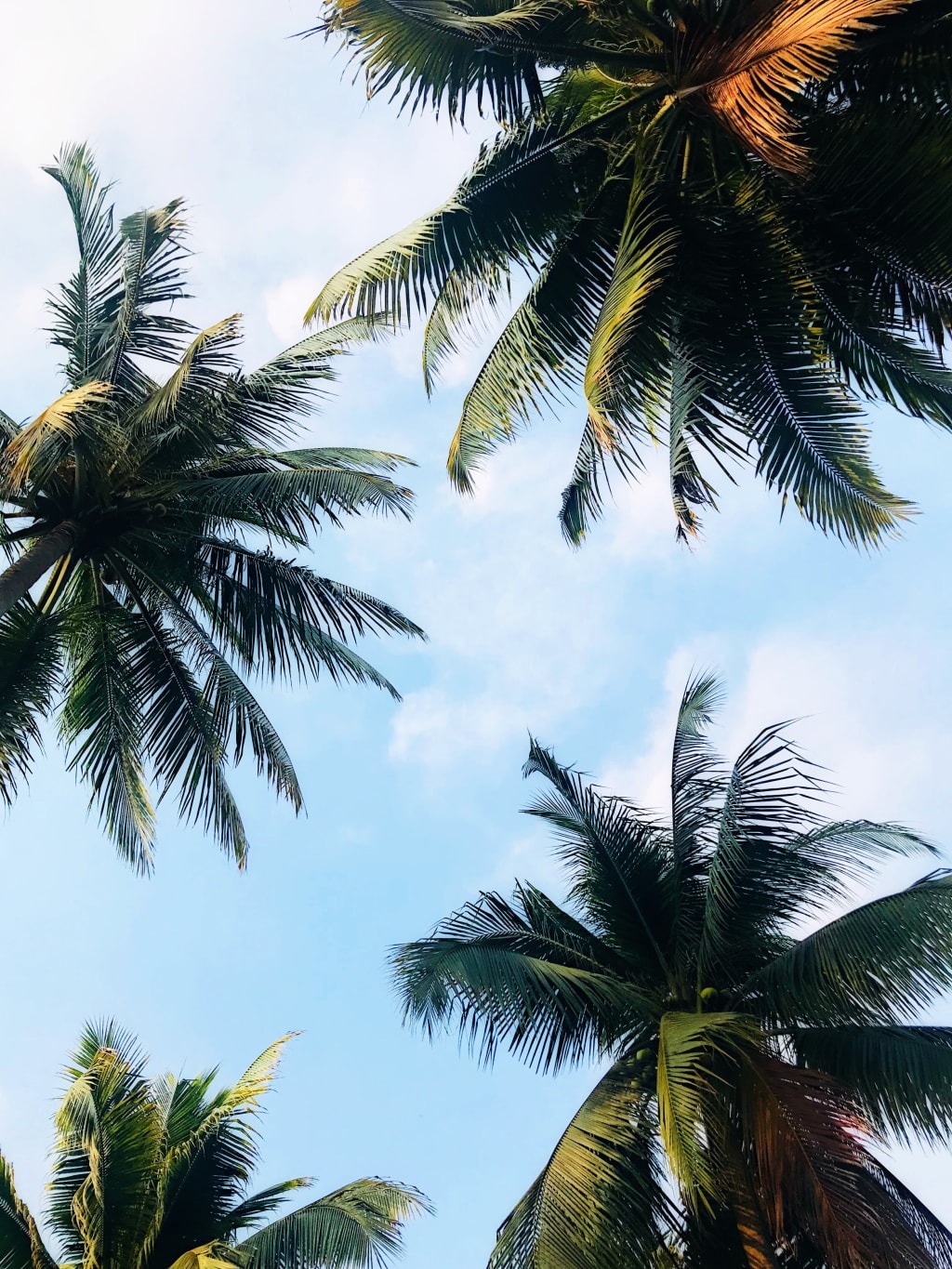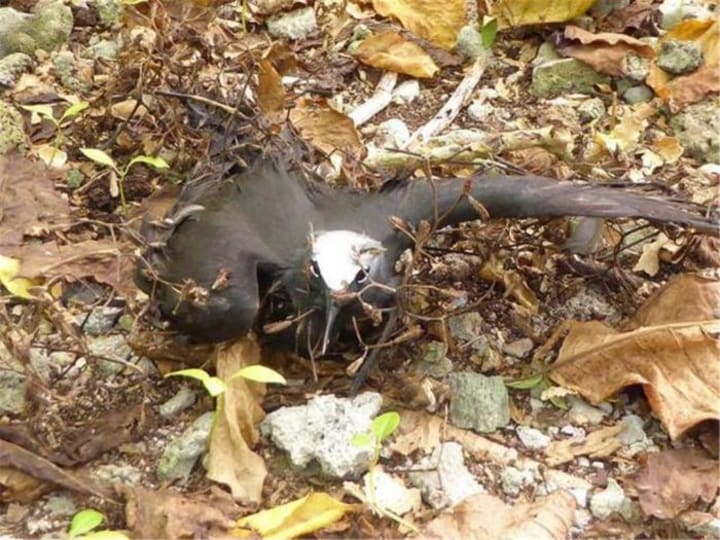
There is a plant in the world that kills birds that stay on it, but not to fill their stomachs, as if it had reached an evolutionary dead end.
The "bird-catching tree" that indulges in killing birds
Speaking of plants that kill animals, your first thought may be flytrap and other insectivorous plants, but there is a plant that can even kill vertebrates, it is the "bird catcher" adenocarcinoma vine tree, alias "avoid frost flowers".
It is a climbing shrub in the purple jasmine family, originally a flowering plant endemic to some islands of New Zealand, but now widely distributed in the tropics.
In coastal scrub and open forests, you can see the adenine tree, some of these trees can grow up to 6 meters high, the appearance of nothing special, but if you search a little, you will find the remains of birds in the roots, branches, and branches.
These birds are dead at the hands of the glandular vine tree. In ordinary times, this tree is harmless, birds stay on it for as long as possible.
But once it comes time to bear fruit, the narrow seed pods of the glandular vine tree will secrete a thick layer of mucus that sticks to the birds that stay or trap insects.
When more and more seeds are stuck on the body, the birds' wings become heavy, at which point they can't fly and can only stay on the tree and be starved to death.

Therefore, the glandular vine tree has been given the title of "bird catcher tree". The strangest thing is that although many birds have died because of it, killing birds is not its original intention.
Generally speaking, there are many reasons why a plant kills an animal. It could be that the plant is self-poisoning and the animal dies of poisoning after eating it; it could be that plants such as flycatchers actively prey on small insects as a way to obtain nutrition.
However, insect-eating plants tend to be found in areas with poor soil, while the tropical islands where the bird catcher trees are located mostly have seabirds to provide ample fertilizer.
Bird-catching trees cause the death of birds, neither because they are toxic themselves nor for energy, but seed dispersal. So how was this conclusion explored?
To "kill" birds, not even to spread seeds
In May 1999, Alan Burger, an ecologist from the University of Victoria in Australia, went to the Seychelles Islands in the Indian Ocean for 10 months to find out the reason for the bird-catching mechanism of the bird-catching tree.
After the study, Alan Burger found that bird-catching trees kill birds, simply can not be to get energy from them. He said that birding trees don't get as many nutrients from bird carcasses as they do from bird droppings.
Living birds have greater value than bird-catching trees, and subsequent studies have proven this even more.
Experiments have shown that the seeds of bird catcher trees die when immersed in seawater for 5 days, but if they are exposed to water from time to time, the seeds can remain active and eventually take root and germinate when they hit the ground, giving birth to new bird catcher trees.
Under normal circumstances, the number of seeds that stick to the birds does not interfere with flight, and seabirds migrate with the seeds, taking them to other islands.
How do you get seabirds to carry seeds on their way? Some animals take their seeds elsewhere while feeding on fruit, but seabirds feed on fish and rarely eat fruit, so birding trees have evolved a "slime" method of seed dispersal.
When the bird-catcher tree bears fruit, the birds that stop on it will be stuck with the seeds. This is a very normal thing, the reason why there will be a bird-killing situation is that the bird catcher tree is in the evolution of the way "run".
Imagine if the slime was not sticky enough, then the seeds stuck on the feathers of seabirds, most likely have two results: one is not waiting for the birds to fly out of the island, the seeds fell off; second, the seeds in the seabird migration, sinking in the ocean.
In either case, it is not conducive to the survival and reproduction of the bird-catcher tree. To guarantee that the seeds are brought safely to other islands to take root, they have to make the mucus secreted by the seed pods more and more sticky.
This skill evolved beyond a certain point, and the downside became obvious: many birds were unable to get out successfully because they were stuck to too many seeds, and eventually died.
Not only did the bird-catching trees fail to achieve their purpose of spreading seeds, they even served as a graft for scavengers, providing food for the latter.
What's even stranger is that even though the consequences may be death, there are still many seabirds that prefer bird-catching trees.
To protect seabirds, bird lovers or conservationists will take action and use tools to free the trapped birds. In some areas, birding trees have also been cut down to protect seabirds.
Ways of seed dispersal
There are countless ways that plants spread their seeds, such as animal dispersal, wind dispersal, water dispersal, and more.
Water dispersal, using the coconut tree as an example. Coconut is a palm plant of the palm family, mostly distributed in coastal areas, the seeds go with the ocean to other islands, where they land and grow.
The most typical example of wind dispersal is the dandelion, whose seeds are so light that they will rise with the wind and spread to faraway places with only a gentle breeze.
The most common way for animals to spread is for the plant to grow showy and delicious fruits, and after the animals eat them, the indigestible seeds are excreted along with the feces and take root in the ground.
From this point of view, the evolutionary direction of the bird catcher tree is a helpless move: the seabirds on the island do not like to eat fruit, and they cannot spread seeds by growing delicious fruits.
The seeds of Near are spread in a way somewhat similar to bird-catching trees, also by attaching to animals/people. The seeds of Near have barbs distributed on their surface, which hook onto them when animals/humans pass by and thus reach other places.
In contrast, the bird catcher tree is more like an evolutionary dead end, too "obsessed with bird catching" to even care about spreading its seeds.
---------- --The bird-catching tree is more like an evolutionary dead end than a bird-catching tree, so obsessed with bird-catching that it can't even spread its seeds.
About the Creator
Stajila
The progress of scientific research and its increasingly expanding fields will arouse our hope。






Comments
There are no comments for this story
Be the first to respond and start the conversation.